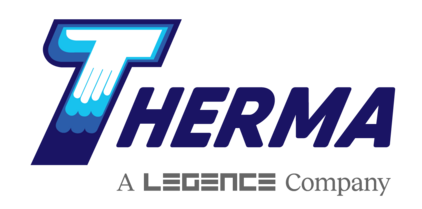by Ali Kriscenski
Building maintenance is a year-round undertaking that requires a detailed schedule and a diligent team. Regardless of where your facility is located, seasonal changes impact the types of building issues that arise at different points in the year. Extreme heat and cold; snow, ice, and rain variances; and changes in humidity are just some of the seasonal changes that need to be factored into your maintenance schedule. Here’s an overview of what to check for during any season.
 Cold Weather Concerns
Cold Weather Concerns
Winter months can be toughest on building exteriors when cold temperatures, wind, rain, snow and ice create extreme conditions. In some locations, building exteriors can be hard to visualize or reach where snow accumulations or wind continue for months. For this reason, preparation for winter conditions is key.
The integrity of a building’s envelope is central to safety, health and operations. The envelope includes all of the materials and systems that comprise a building’s roofing, siding, doors and windows. The building envelope keeps weather and moisture out, moderates daylighting, provides safe egress and allows ventilation.
A solid building maintenance schedule includes winter preparation ahead of colder weather. This is the time to check roofing and siding for any deterioration, check windows and doors for any damage, and be sure that all door and window hardware is in good working condition. Any needed repairs can be prioritized before the colder months set in.

In addition to a building’s exterior, winter preparations should include an inspection of your building’s HVAC system. A thorough system cleaning, including filters and vents, will prevent releasing allergens and other contaminants into occupied spaces when a system starts up for the season. This will also help the system run more efficiently and for airflow to distribute evenly. Run your HVAC before winter and check for odors, noises or leaks. This step will help identify any needed repairs ahead of winter demand.
If your building systems are managed manually, you may want to consider installing programmable controls and remote sensors. Building automation systems can create opportunities for energy savings by setting parameters for heating and cooling programs. Additionally, remote sensors can help monitor building temperatures, humidity, security and leaks.
Hot Weather Issues
When temperatures rise, building materials and systems are put to the test. Extreme heat can cause building components, such as siding or roofing, to deteriorate, leading to potential damage from water infiltration. To stay ahead of problems, a summer building checklist should include full visual inspection of roofing, siding, weatherstripping and any other building materials that could be compromised by high temps.
In preparation for hotter weather, any HVAC maintenance and repairs can be performed ahead of seasonal demand for cooling. Air conditioning units are built to endure all types of weather; however, they still need regular maintenance to perform efficiently. Running AC systems before the summer months will reveal any issues or deficiencies.
Humidity & Moisture
A change in season usually means a change in moisture and humidity. In cold climates, a drop in humidity can cause millwork or equipment damage. It can also cause health and respiratory issues, such as respiratory tract infections. High humidity brought on by wet weather can damage finishes or create health hazards, such as mildew and mold. Humidity levels that are too high can create conditions for dust mites in finishes or even trigger asthma attacks.
In seasons of high humidity, schedule at least one inspection annually to look for signs of damage or contaminants caused by moisture variances. Check for water leaks, condensation, deterioration of finishes such as drywall, or other signs that humidity levels are outside healthy parameters. Consider remote sensors for areas that are out of sight or hard to access.
An experienced HVAC service team and can provide ongoing maintenance services to help with facility operations year-round. Therma’s professionals are experts in HVAC, design and engineering, system controls and many more disciplines that are crucial to your facility maintenance. Contact Therma today to learn more.
Ali Kriscenski was trained in high-performance building design at Boston Architectural College. She has worked with leading architecture and construction firms in NYC and New England and served on the executive team at the Forest Stewardship Council International. She was the managing editor at Inhabitat and has worked pro bono for the Green Building Institute, ISEAL Alliance and Habitat for Humanity.
Sources
Center for Disease Control — Basic Facts About Mold and Dampness
US EPA — Indoor Air Quality (IAQ)







